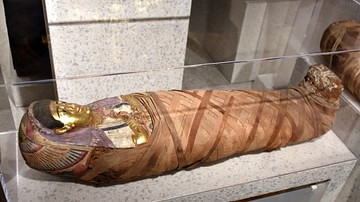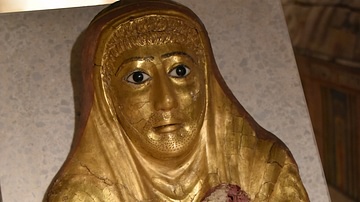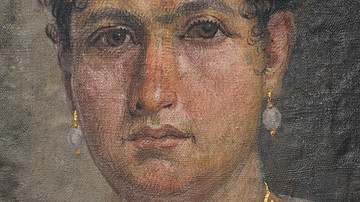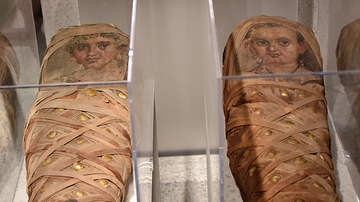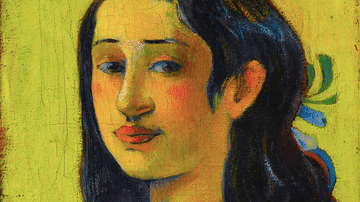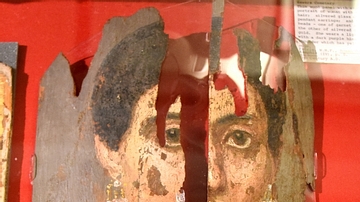Illustration
Mummy portrait from the Tomb of Aline, Hawara. Early Roman Period of Egypt, c. 24 CE.
Neues Museum, Berlin.
The Tomb of Aline was unearthed in 1892 by the German archaeologist Richard von Kaufmann. A hewn stele carved with a Greek inscription mentions the name Aline as the owner of the tomb; the grave was named after this woman's name. Because the mummy is still intact and not opened, it was initially thought that this mummy represents a boy, not a girl. However, recent analysis of the portrait has shown that the child is female and is identified as one of Aline's daughters. The chubby-faced girl wears a leather band with a lunula pendant around her neck; a type of apotropaic amulets commonly worn by women or girls in Roman Egypt. The girl wears a violet chiton, partially fallen, exposing her left shoulder; a feature exclusive to females and associated to the Greek goddess Aphrodite.
About the Author
Cite This Work
APA Style
Amin, O. S. M. (2019, September 07). Mummy Portrait from the Tomb of Aline at Hawara. World History Encyclopedia. Retrieved from https://www.worldhistory.org/image/11148/mummy-portrait-from-the-tomb-of-aline-at-hawara/
Chicago Style
Amin, Osama Shukir Muhammed. "Mummy Portrait from the Tomb of Aline at Hawara." World History Encyclopedia. Last modified September 07, 2019. https://www.worldhistory.org/image/11148/mummy-portrait-from-the-tomb-of-aline-at-hawara/.
MLA Style
Amin, Osama Shukir Muhammed. "Mummy Portrait from the Tomb of Aline at Hawara." World History Encyclopedia. World History Encyclopedia, 07 Sep 2019, https://www.worldhistory.org/image/11148/mummy-portrait-from-the-tomb-of-aline-at-hawara/. Web. 06 May 2025.



